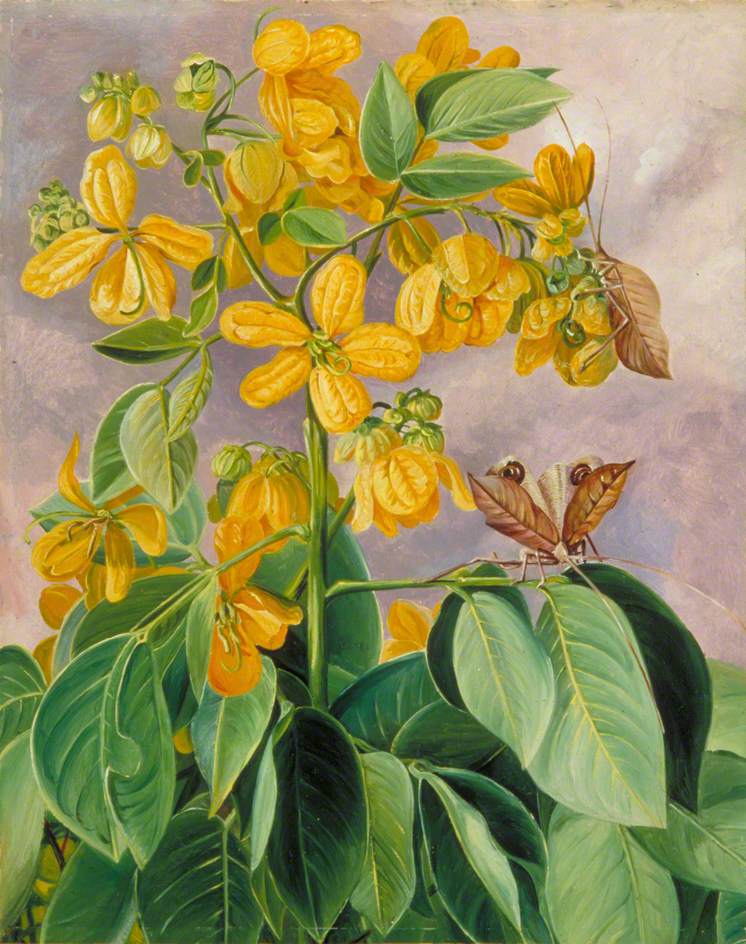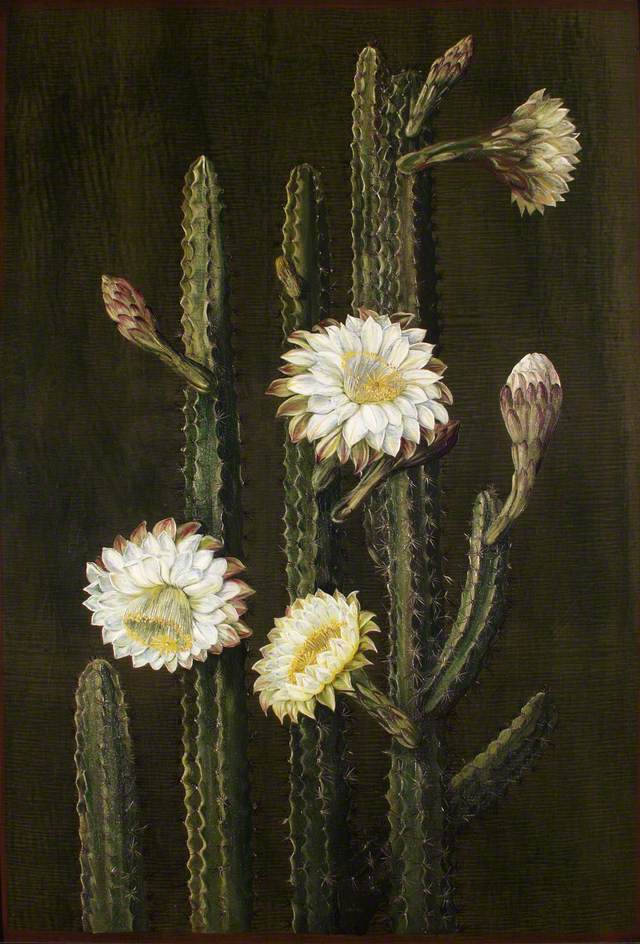Burton (1821–90), a British explorer, diplomat and writer (just some of his occupations; he had so many throughout his life that it's difficult to list them all), is well-known for his 'adventures' across Asia, Africa and the Americas – the sort of manly escapades you might find in a
Boys' Own magazine. Burton worked in Brazil as a diplomat from 1865–8, accompanied by his wife Isabel (née Arundel; 1831–96), his 'constant companion'. After returning to England he published a lengthy account of the 'holiday excursion' which he and Isabel made 'to the Gold Mines of Minas Geraes [sic] via Petropolis, Barbaçena, and the Prairies and Highlands of the Brazil'.
[1] The book records his impressions of the places he visited, and occasionally the visual culture of the Brazilian people which he encountered – not always with enthusiasm.
In June 1867, Richard and Isabel passed through Juiz de Fora, which was then a small town. Felipe and I were intrigued to see what Richard thought of it. We were in for a treat. 'The city is the usual mixture of misery and splendour' (ouch!), Burton begins, before continuing:
Juiz de Fora is a single dusty or muddy street, or rather road, across which palms are planted in pairs. [...] The dwellings are low and poor, mostly 'door and window' as the phrase is. Amongst them, however, are large and roomy town houses, with gilt pineapples on the roof, glass balls on the French balconies, fantastic water-spouts, pig-tailed corners, birds of tile and mortar disposed along the ridges, and all the architectural freaks of Rio de Janeiro.[2]
I mean, it doesn't look
that bad!
Burton paid a visit to one of Juiz de Fora's notable sites: the home of the engineer and politician Mariano Procópio Ferreira Lage (1821–72), which had been built in 1856–61 in the style of an Italian villa, with a surrounding park. The villa housed Ferreira Lage's ever-growing art collection. After his death, his son Alfredo built an extension so that the artworks could be displayed to the public; this opened in 1922. The collection comprises works by nineteenth-century Brazilian painters and sculptors, with some pictures from Europe, including a notable landscape painting by the Dutch Willem Roelofs (about which Felipe wrote his MA dissertation). Today, the complex is known as the Museu Mariano Procópio, and its beautiful grounds are open to the public. The museum and villa are in a less happy state: the former is able to display only a handful of works from the collection (just sculptures – no paintings), while the latter is shut up indefinitely for repairs. It's only a few minutes' walk from Felipe's family home, so I know it well enough by now!
 |
| Aerial photo of the Museu Mariano Procópio, the original villa at the top and the 1922 extension below it. Photo: Pinterest; couldn't find the original source! |
.jpg/1024px-Museu_Mariano_Proc%C3%B3pio_por_Rodrigo_Tetsuo_Argenton_(09).jpg) |
| The original Villa Ferreira Lage built in 1856–61, as it appears today. Source. |
Richard Burton described the villa as the 'château' of Juiz de Fora, and this is what it looked like when he saw it in the 1860s:
Today, the villa is obscured by trees, so it can no longer be seen from the road. Perhaps surprisingly, Burton was not impressed by what he saw, writing fussily:
Our fastidious English taste could find no fault in house or grounds, except that they were a little fantastic, the contrast with Nature was somewhat too violent – an Italian villa-garden in a virgin forest is startling. The château, which cost 30,000l. [pounds] or 40,000l., has too much colour and too many medallions; behind it, too, there is an ugly bridge leading to a prim summer-house, both of cast iron, and the former painfully like a viaduct.[3]
The offending bridge and summer house still stand:
In some ways it's unsurprising to see a Victorian gentleman using his 'fastidious English taste' as an excuse to be condescending towards another country's culture. For me, the very incongruity and unexpectedness of the Villa Ferreira Lage are what make it so interesting: it's a nineteenth-century Brazilian interpretation of historical Italian architecture planted in the midst of a small tropical forest, which is itself a manmade construction. It looms suddenly into view as you ascend the mound on which it stands, a dream of Venice through the trees and spider webs. It reminds me of Appleyard College, the fictional girls' school in Joan Lindsay's novel
Picnic at Hanging Rock (1967), a villa of European design awkwardly placed in the hazy Australian outback, a metaphor for the story's imperialist themes.
[4]
Burton was equally unimpressed by the extensive grounds of Ferreira Lage's grand home:
The little lake, with bamboo-tufted islets, dwarf Chinese bridges, and paddled boat, worked by negroes instead of steam; the 'Grotto of the Princesses', the grotesque seats and arbours, and the rustic figures of wood, are a trifle too artificial, and the Ema and stags, not pacing over the park, but caged along with monkeys and silver pheasants, suggested a menagerie. The European and tropical plants, however, were magnificent, and we measured an arum-leaf 5 feet 4 inches long. [...] We wandered about the orangery, which was innocent of glass, and found out the favourite trees; we lay for hours upon the grass eating the Tangerines, enjoying the perfumed shade of the myrtles, and admiring the young Wellingtonias and screwpines.[5]
 |
| The Parque Museu Maranio Procópio, Juiz de Fora. Source. |
The bamboos have grown magnificently since Burton saw them!
It was a bit rich of Burton to criticise the park's 'artificial' features on account of 'English taste', given the vogue among eighteenth-century English aristocrats for ferociously reshaping the grounds of their country houses to the point where manmade lakes and fake grottoes, temples, ruins and hermitages (sometimes complete with a live-in hermit!) became a cultural norm (a trend partly influenced by the paintings of Claude Lorrain). The 'Grotto of the Princess', which is still in the park in Juiz de Fora today (see below), wouldn't look out of place in the grounds of Blenheim Palace!
After Richard Burton left the city, he was followed a few years later by Marianne North (1830–90), the famed botanist and artist. Although North didn't make any of her paintings there (that we know of!), she did write about her visit to the town in her memoirs, posthumously published in 1894.
 |
| Julia Margaret Cameron, Marianne North, 1877, albumen print, V&A, London. |
North was a born traveller. She accompanied her father Frederick on excursions to Switzerland, Syria and the Nile in the 1850s and 1860s. When Frederick died in 1869, Marianne determined to continue travelling, but to go even farther abroad – and to do so alone, which, needless to say, was highly unusual for a Victorian woman (although her upper-class status undoubtedly made things easier). A keen botanist and painter, she intended to document the flora and landscapes of the countries she visited in small, detailed oil paintings, around 1,000 of which now survive in the extraordinary
Marianne North Gallery at Kew Gardens.
 |
| Marianne North, Flowers of cassia corymbosa in Minas Geraes, Brazil, ca. 1873, oil on board, 45 x 35 cm, Marianne North Gallery, Royal Botanic Gardens, Kew, Richmond, UK. |
Brazil was one of the first countries North visited by herself. She arrived in the northeastern state of Pernambuco in August 1872, and spent about a year in the country before departing for England in September 1873. She passed through Juiz de Fora in late October or early November 1872, on her way to São João del Rei, a colonial town in Minas. Her reaction to Juiz de Fora was kinder than Burton's:
[The town] is all one monument to the great and good man who founded it, Senhor Mariano Lages [sic]; even the excellent hotel was designed and built by him, and a college for agriculture, library, museum, his own pretty villa and gardens, and the grand road itself, were all made by him for the good of his country, as well as his own. [...] The village itself looked very comfortable, every cottage having its own luxuriant little garden and shady porch, under which the fair German women and children sat knitting with their hair plaited around their heads.[6]
Ferreira Lage had died earlier that year, in February 1872. North greatly admired the aforementioned park surrounding the villa, saying that it was 'full of treasures',
not only of plants, but of birds and animals; there was a fence of fifty yards at least, entirely hung with rare orchids tied together; every available tree-branch was also decorated in the same way, and many of them were covered when we were there with lovely blossoms of white, lilac, and yellow, mostly very sweet-scented. There was also a great variety of palms. I saw one huge candelabra cactus twenty feet in height, and the air was perfumed with orange and lemon blossoms.[7]
Common to both North's and Burton's accounts is the wonder with which they viewed the trees, flowers and wildlife in Ferreira Lage's park, so different to what they knew back home. The park was a place to be quiet and restful in, to wonder at the natural world. In the Marianne North Gallery there is a large study of a Brazilian columnar cactus which could have been inspired by the 'huge candelabra cactus' which North saw in the park, although this is pure conjecture:
In my next post, I will continue to examine the presence of these Victorian travellers in Minas Gerais.
Endnote: the present day
 |
| Me in the Parque Mariano Procópio, Juiz de Fora, 12 May 2019. |
 |
| Bronze allegorical sculpture of 'The Arts' in the Parque Mariano Procópio, 17 May 2018. |
 |
| Cabinet of plaster casts in the Museu Mariano Procópio, 17 May 2018. |
Notes
[1] Richard Francis Burton,
Explorations of the Highlands of the Brazil (London: Tinsley Brothers, 1869), vol. 1, p. 20.
[2] Burton,
Explorations, vol. 1, p. 50.
[3] Burton,
Explorations, vol. 1, p. 51.
[4] For his 1975 film adaptation of
Picnic at Hanging Rock, Peter Weir chose the real
Martindale Hall in south Australia as the location for the school, which has echoes of the Villa Ferreira Lage.
[5] Burton,
Explorations, vol. 1, pp. 51–52.
[6] Marianne North,
Recollections of a Happy Life, edited by Mrs John Addington Symonds (London: Macmillan and Co., 1894), vol. 1, pp. 129–30.
[7] North,
Recollections, vol. 1, p. 130.




.jpg/1024px-Museu_Mariano_Proc%C3%B3pio_por_Rodrigo_Tetsuo_Argenton_(09).jpg)












No comments:
Post a Comment